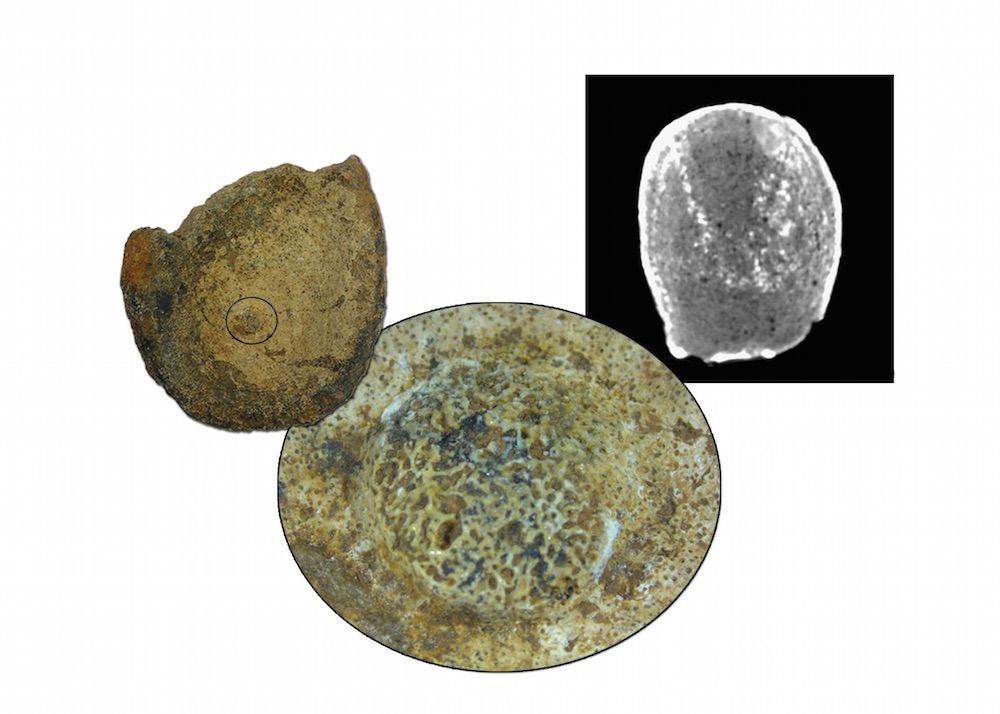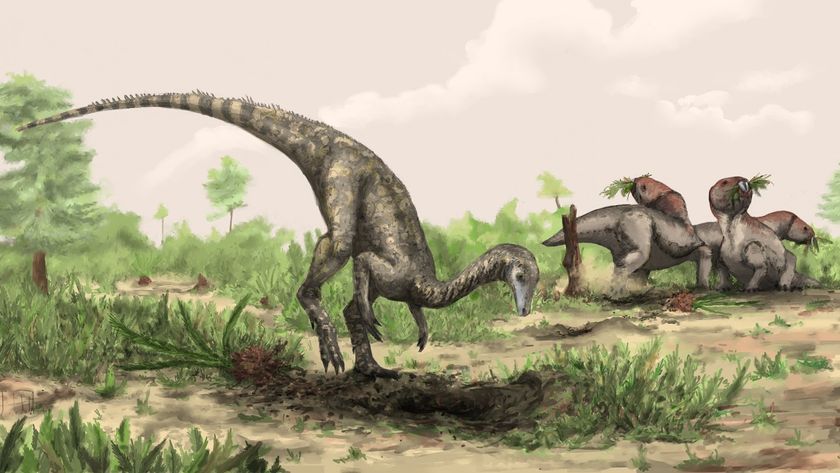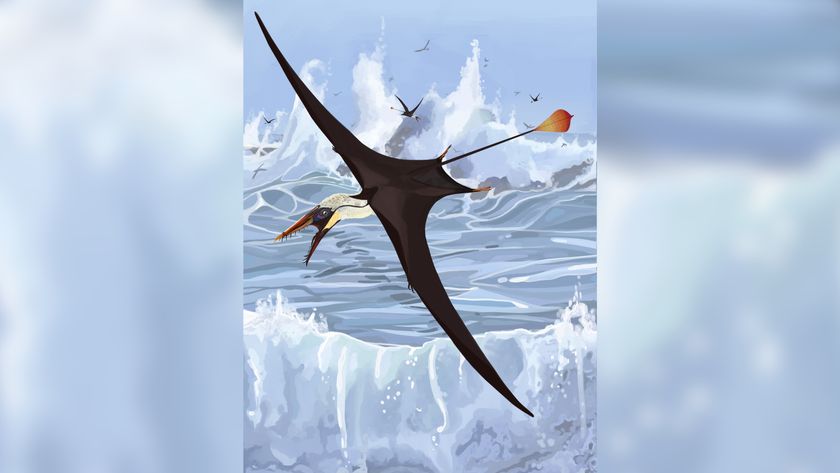Giant Dinosaur Had 2 Tumors on Its Tailbone

It's fairly common to discover dinosaur remains scratched with ancient claw or bite marks, but finding fossils with signs of tumors is rare.
And now scientists have found not one but two different types of tumor on the same bone — the vertebra of a titanosaur, a gigantic long-necked, long-tailed paleo beast, a new study finds.
"Finding any disease in fossils is rare," said the study's lead researcher, Fernando Barbosa, a doctoral student of geology at the Federal University of Rio de Janeiro in Brazil. "Cancer still is most rare because the majority of them do not leave signals in bones." [Gory Guts: Photos of a T. Rex Autopsy]
The finding is the first known case of a tumor in a dinosaur that isn't a duck-billed dinosaur, or hadrosaur, the researchers said.
The 7-inch-long (17 centimeters) fossilized vertebra, discovered in 2012 in Brazil's southern São Paulo state, belongs to a species in the Titanosauridae family, "the most abundant Cretaceous dinosaur family of South America," the researchers wrote in the study.
However, the 90-million-year-old bone had an unusual appearance — a "small bony button-shaped protuberance," the researchers wrote in the study. Curious, Barbosa and his colleagues decided to investigate the weird bump, which measured just 0.3 by 0.3 inches (8.6 by 7.5 millimeters).
They found evidence of two tumors, both benign, Barbosa said. One is an osteoma, a bone overgrowth, which the researchers confirmed with a computer tomography (CT) scan and an examination of the fossil's structure.
Sign up for the Live Science daily newsletter now
Get the world’s most fascinating discoveries delivered straight to your inbox.
The other, a hemangioma, is a harmless vascular tumor.
"We were very lucky finding this because we didn't have any evidence of the hemangioma," Barbosa told Live Science in an email. "It was diagnosed by [the CT scan], which was only possible because we were investigating the radiological appearance of the osteoma."
The tumors, though examples of abnormal cell growth, should not be called cancer, he said. Usually, only harmful tumors are called cancer, and these tumors were benign, Barbosa said. Furthermore, because of the tumors' location and likely small sizes, the dinosaur probably didn't notice them, the researchers said.
It's not the first ancient animal to have an osteoma, the researchers said. The oldest known case of osteoma dates to the early Carboniferous (a period spanning 359.2 million to 299 million years ago) in the North American fish Phanerosteon mirabile. The mosasaur Platecarpus, a marine reptile, also had an osteoma, as did a crocodile, Leidyosuchus formidabilis, which lived during the Paleocene, a period spanning between 65 million and 56 million years ago.
The new finding shows that dinosaurs other than hadrosaurs developed tumors, Barbosa said. For instance, Brachylophosaurus, Gilmoreosaurus, Bactrosaurus and Edmontosaurus, all duck-billed dinosaurs, show evidence of hemangiomas, just like the titanosaur does. Various individuals from the genus Edmontosaurus also showed evidence of a desmoplastic fibroma (a rare bone tumor), an osteoblastoma (bone cancer) and a metastatic cancer (cancer that spreads throughout the body).
"We still need to find several other diseases in dinosaurs [and] other extinct animals, and understand why they were affected by them," Barbosa said.
The study will be published in the July issue of the journal Cretaceous Research.
Follow Laura Geggel on Twitter @LauraGeggel. Follow Live Science @livescience, Facebook & Google+. Original article on Live Science.

Laura is the archaeology and Life's Little Mysteries editor at Live Science. She also reports on general science, including paleontology. Her work has appeared in The New York Times, Scholastic, Popular Science and Spectrum, a site on autism research. She has won multiple awards from the Society of Professional Journalists and the Washington Newspaper Publishers Association for her reporting at a weekly newspaper near Seattle. Laura holds a bachelor's degree in English literature and psychology from Washington University in St. Louis and a master's degree in science writing from NYU.


